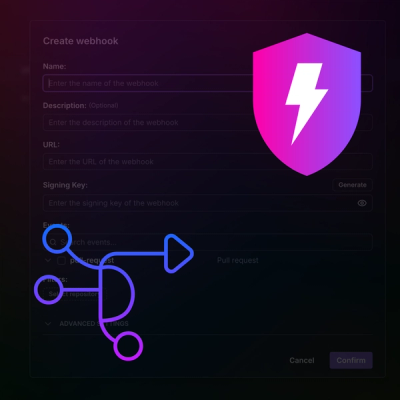
Product
Introducing Webhook Events for Pull Request Scans
Add real-time Socket webhook events to your workflows to automatically receive pull request scan results and security alerts in real time.
inspired by http://reefpoints.dockyard.com/ruby/2013/05/09/context-validations.html
attempting to provide a solution to different validations for controller methods depending on the context and also applying those validations to non-active_record objects
Add this line to your application's Gemfile:
gem 'validbot'
And then execute:
$ bundle
Or install it yourself as:
$ gem install validbot
Validations are applied to the object that is passed to the validate method, the validations
in the block passed are applied when valid? is called on the object.
Basic controller example:
class AwesomeController < ApplicationController
def create
@awesome = ::Awesome.new(params)
validate_create(@aweome)
if @awesome.valid?
render :show
else
render :error
end
end
def update
@awesome = ::Awesome.find(params[:id])
validate_update(@aweome)
if @awesome.valid?
render :show
else
render :error
end
end
private
def validate_create(awesome_object)
Validbot.validate(awesome_object) do
validates :name, :presence => true # name must be present on create
end
end
def validate_update(awesome_object)
Validbot.validate(awesome_object) do
validate :has_not_been_updated_recently?
def has_not_been_updated_recently?
if self.updated_at && self.updated_at > 15.minutes.ago
self.errors.add(:updated_at, 'can only update every 15 minutes')
end
end
end
end
end
git checkout -b my-new-feature)git commit -am 'Add some feature')git push origin my-new-feature)FAQs
Unknown package
We found that validbot demonstrated a not healthy version release cadence and project activity because the last version was released a year ago. It has 1 open source maintainer collaborating on the project.
Did you know?

Socket for GitHub automatically highlights issues in each pull request and monitors the health of all your open source dependencies. Discover the contents of your packages and block harmful activity before you install or update your dependencies.

Product
Add real-time Socket webhook events to your workflows to automatically receive pull request scan results and security alerts in real time.

Research
The Socket Threat Research Team uncovered malicious NuGet packages typosquatting the popular Nethereum project to steal wallet keys.

Product
A single platform for static analysis, secrets detection, container scanning, and CVE checks—built on trusted open source tools, ready to run out of the box.